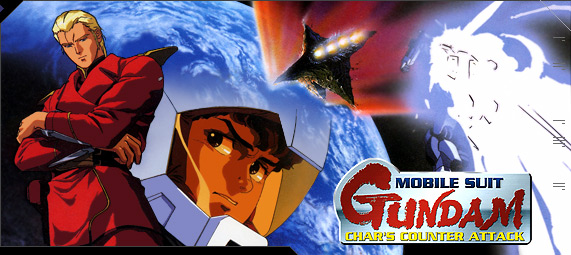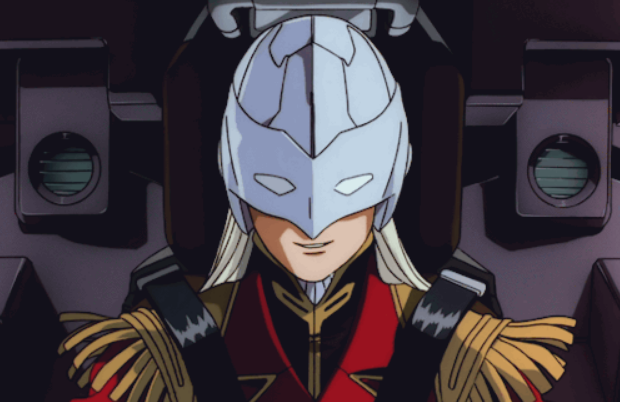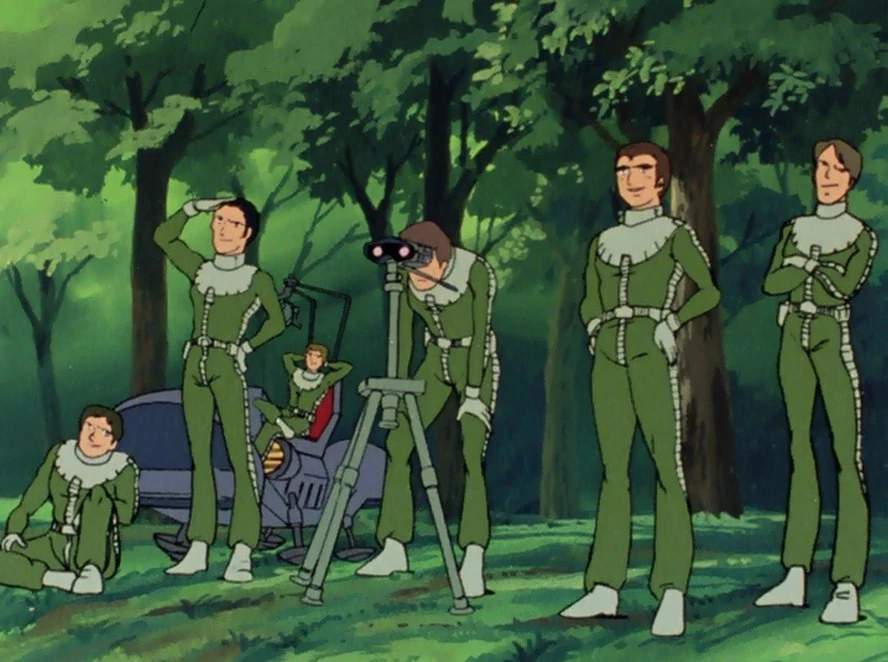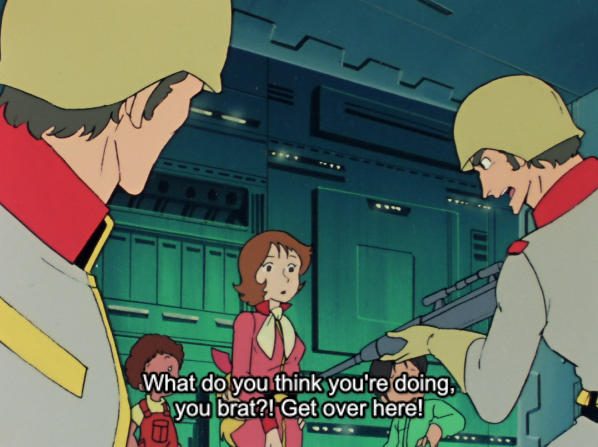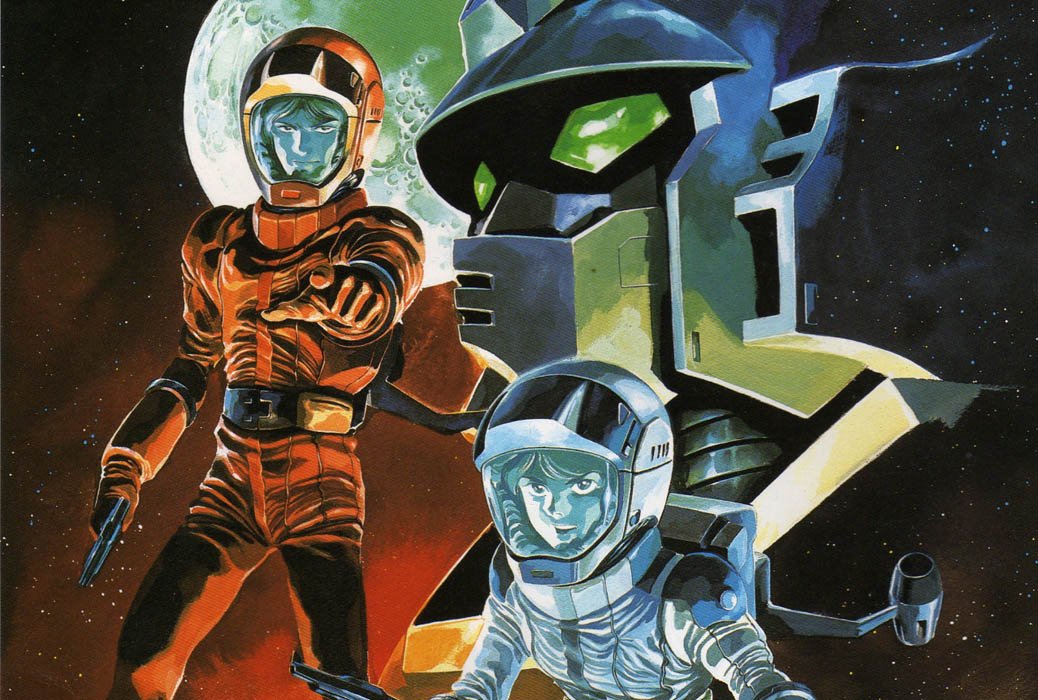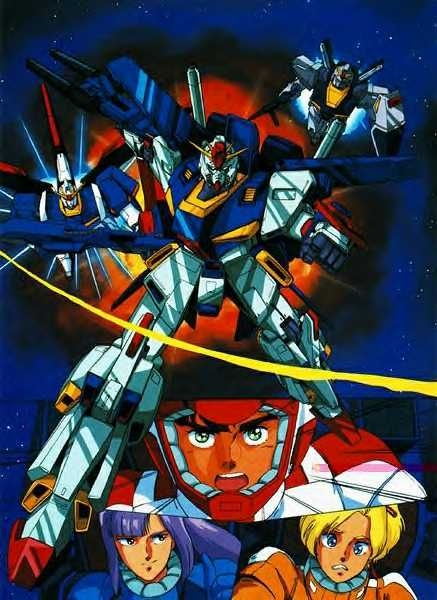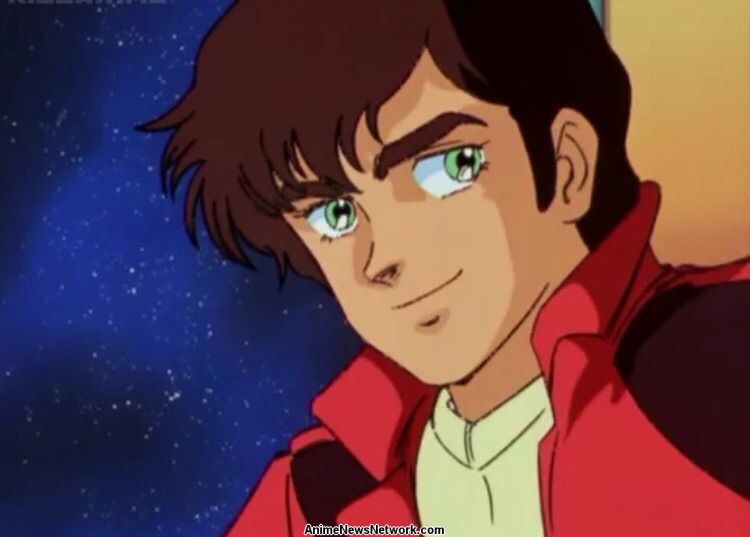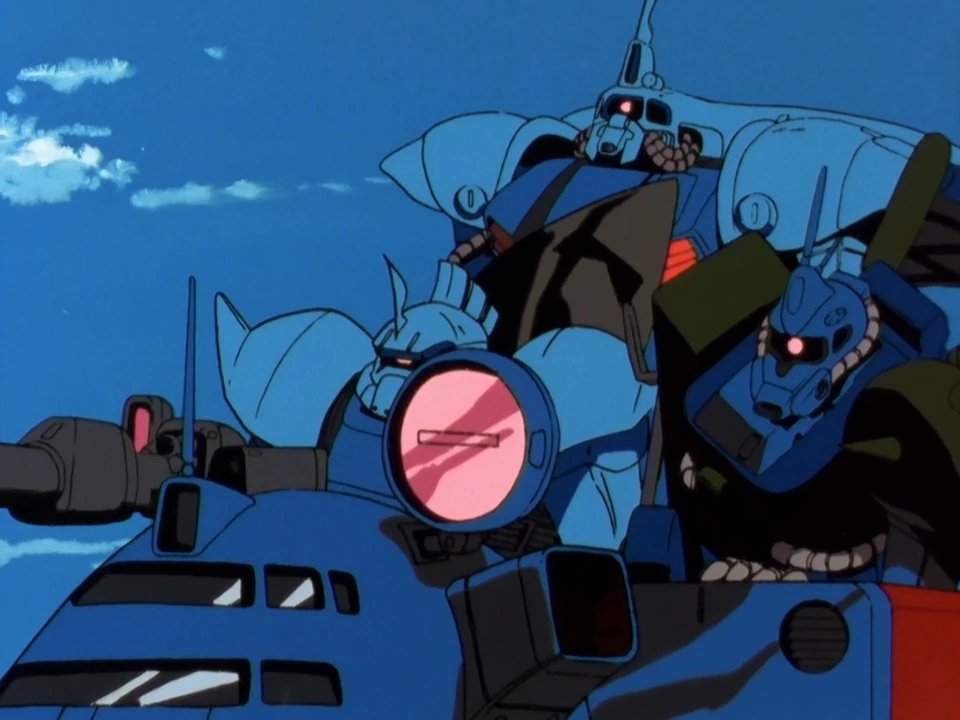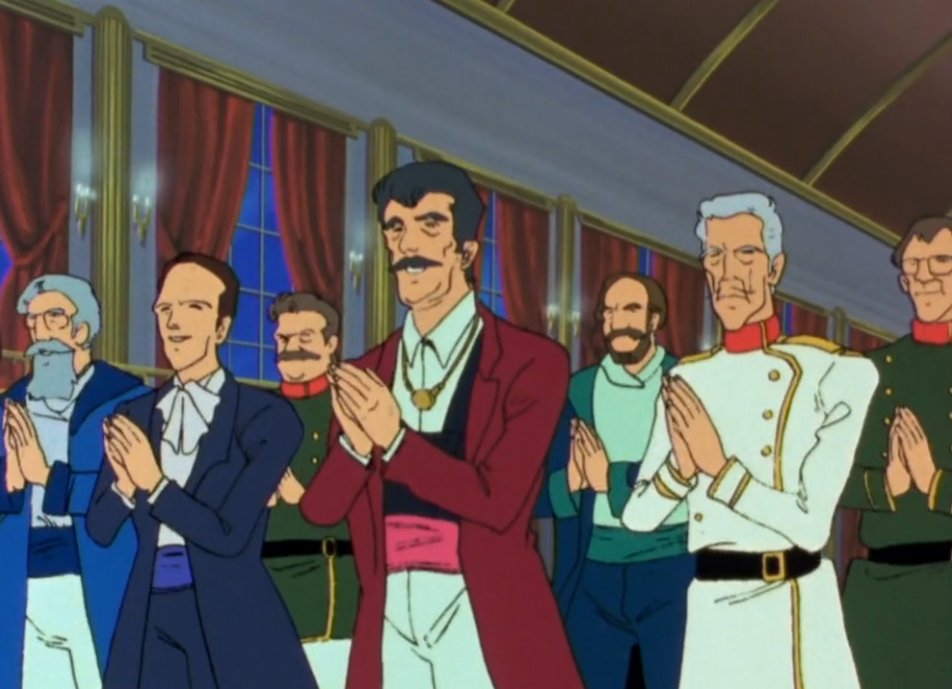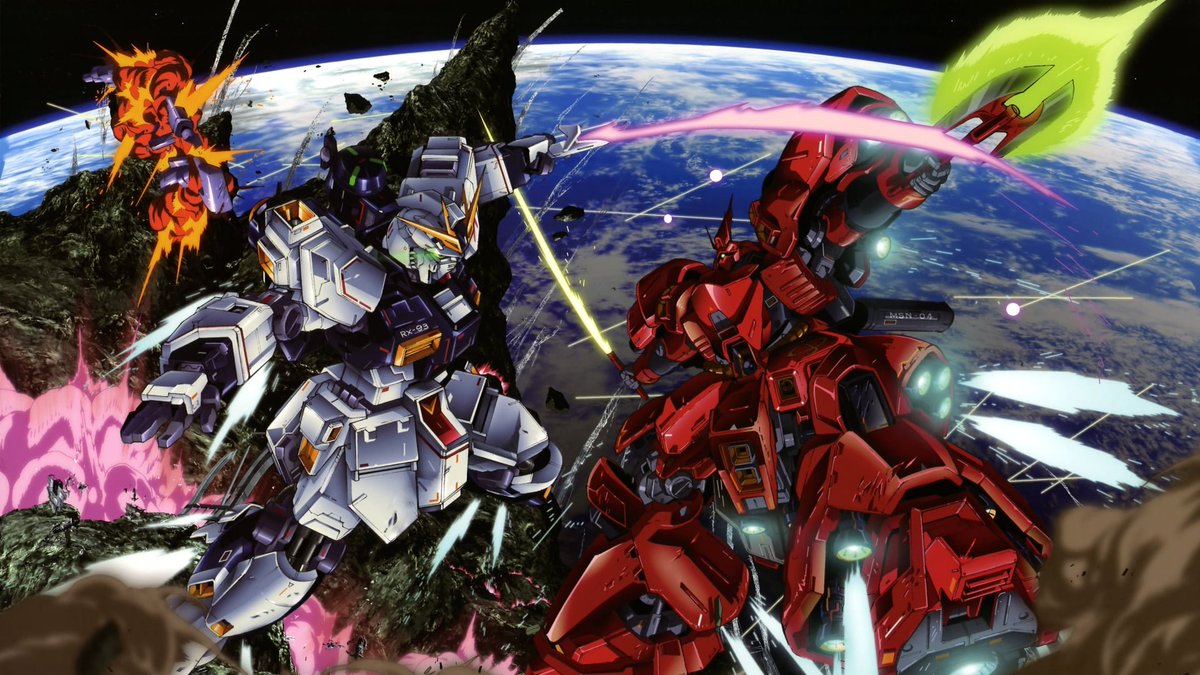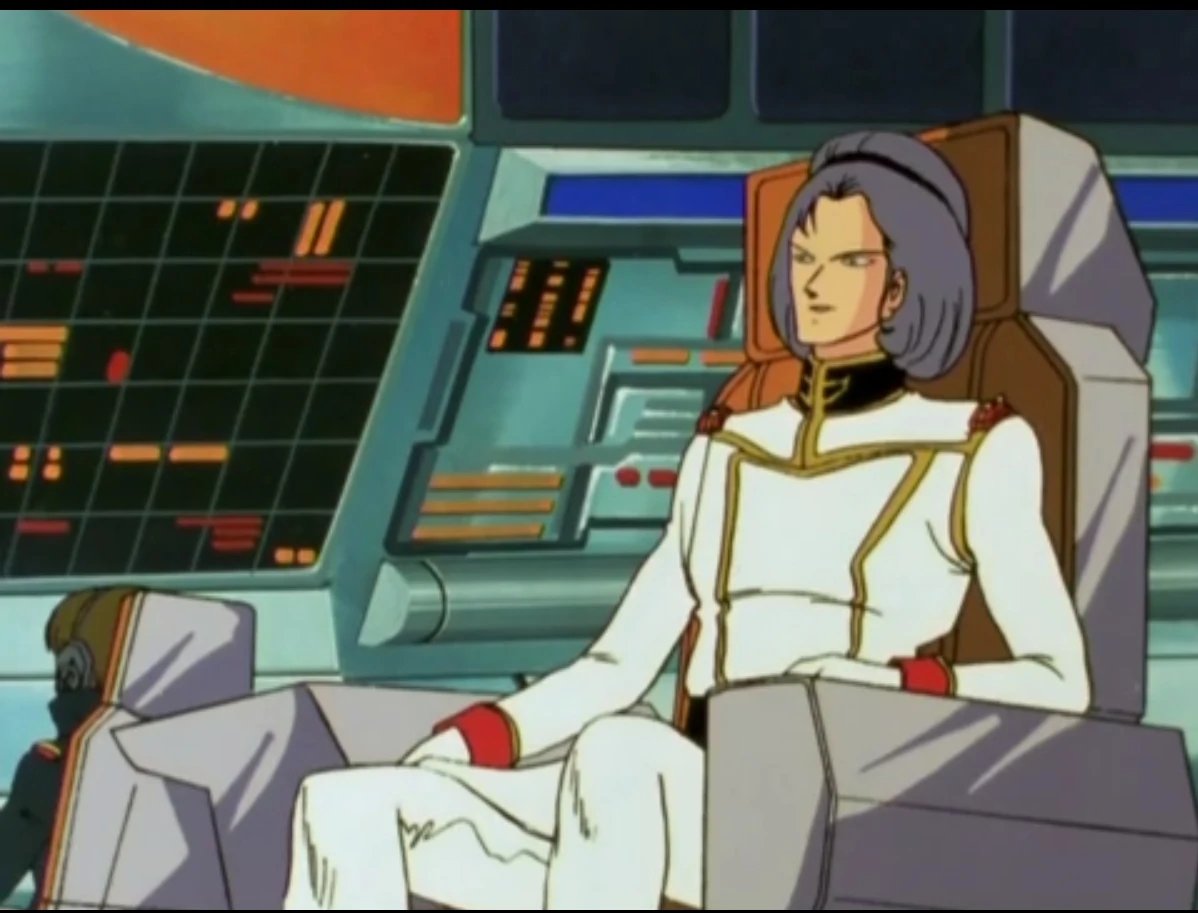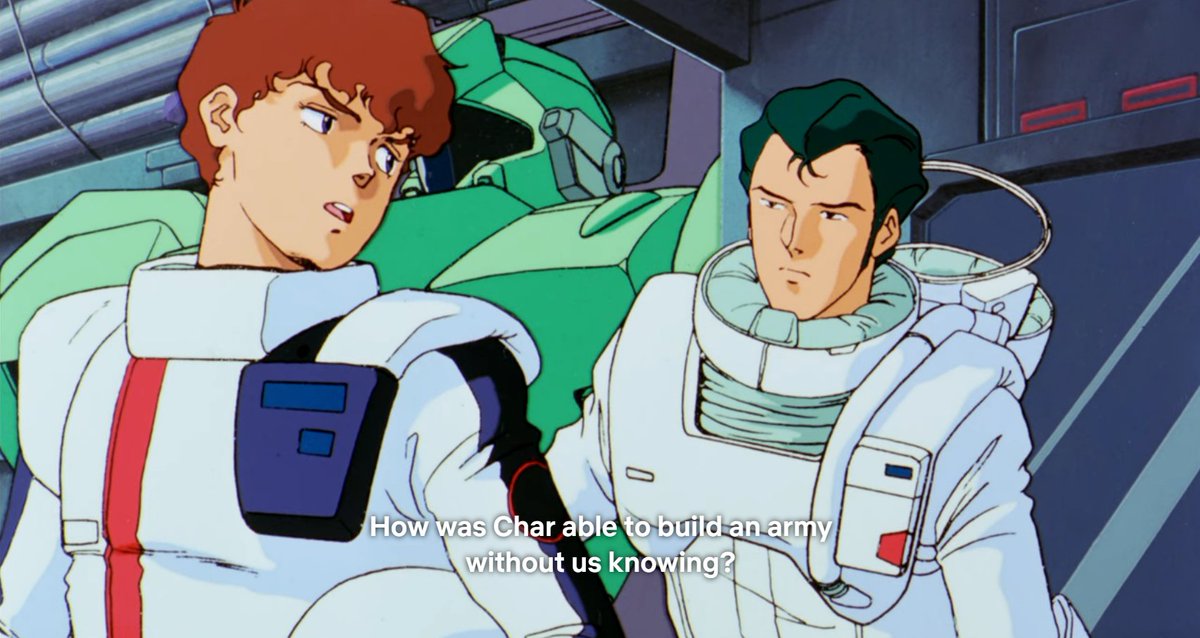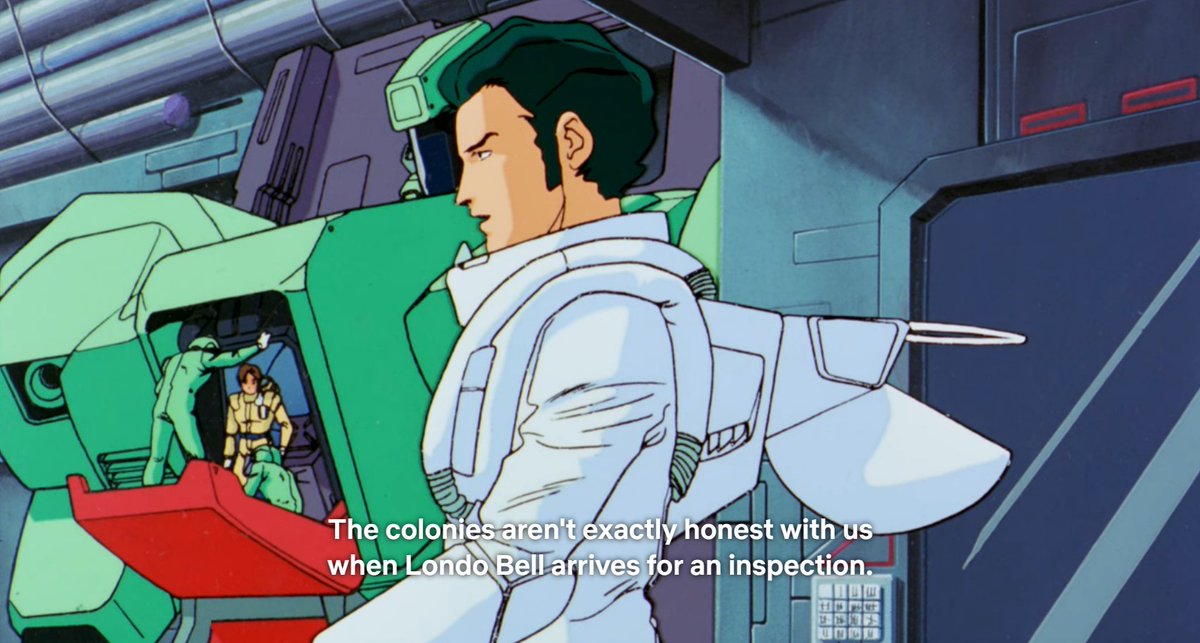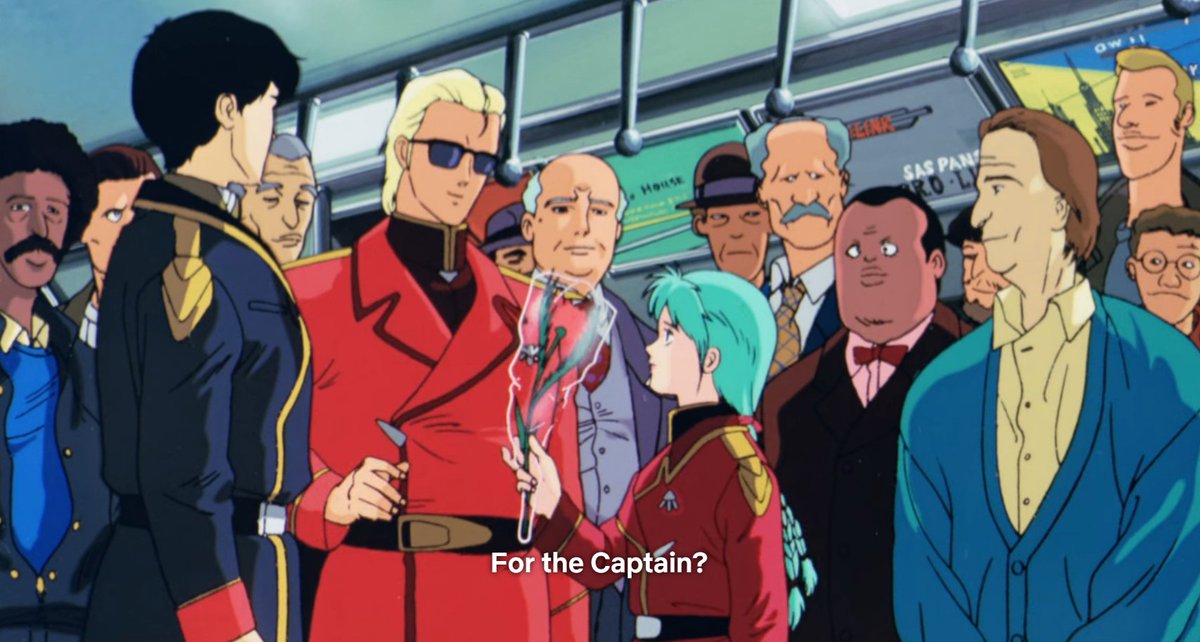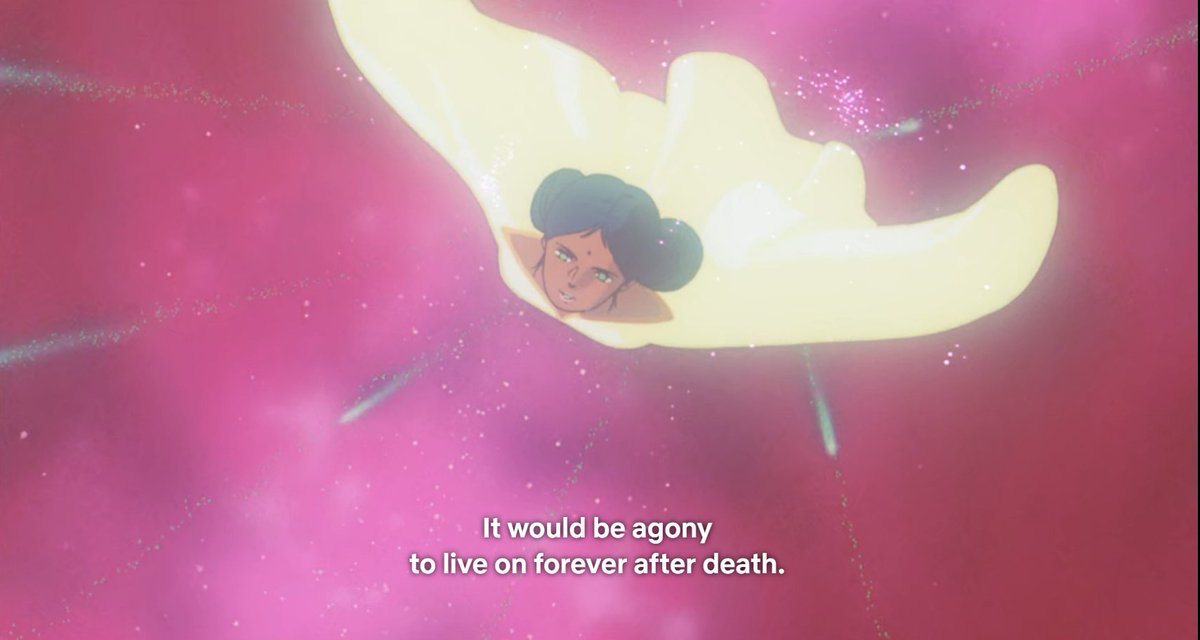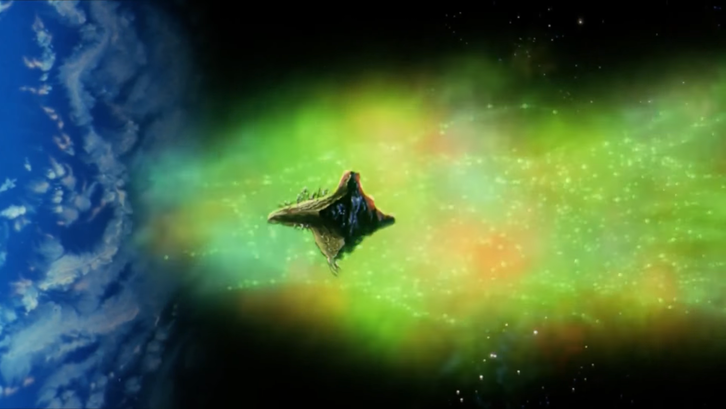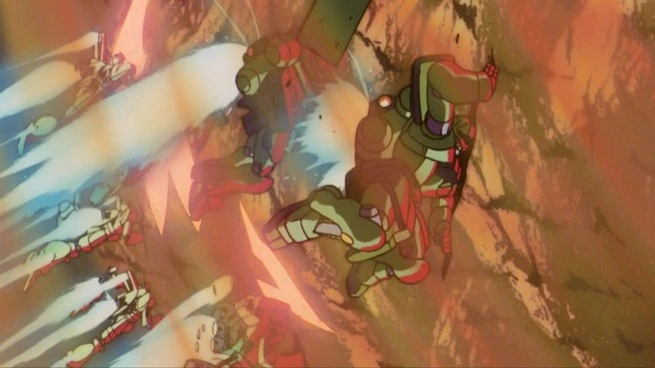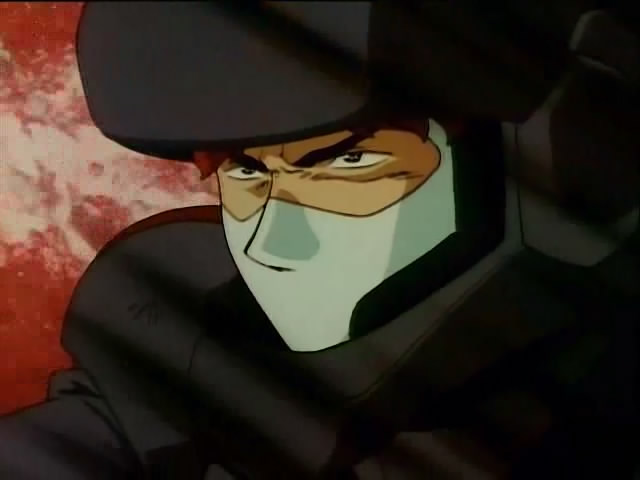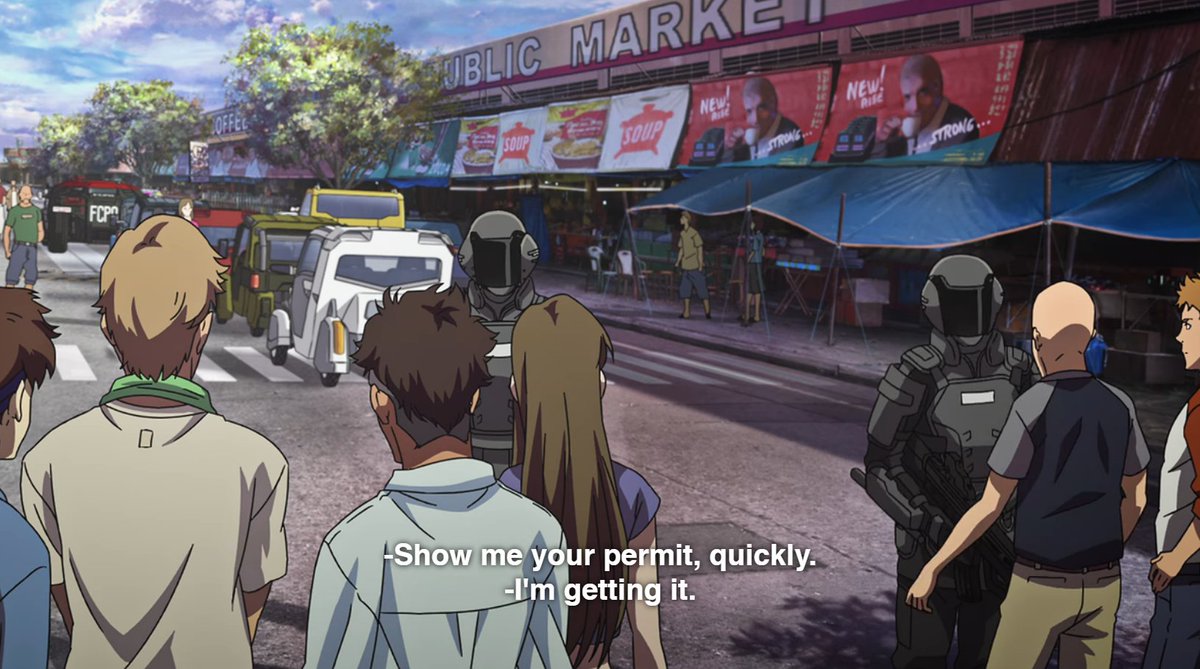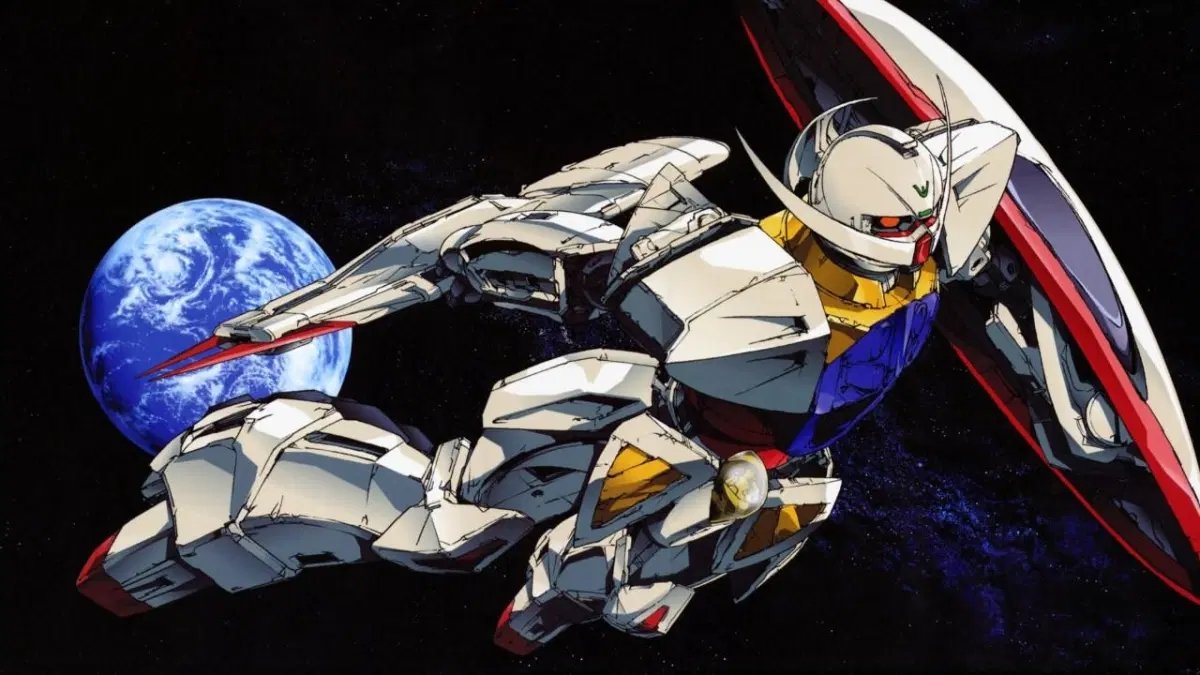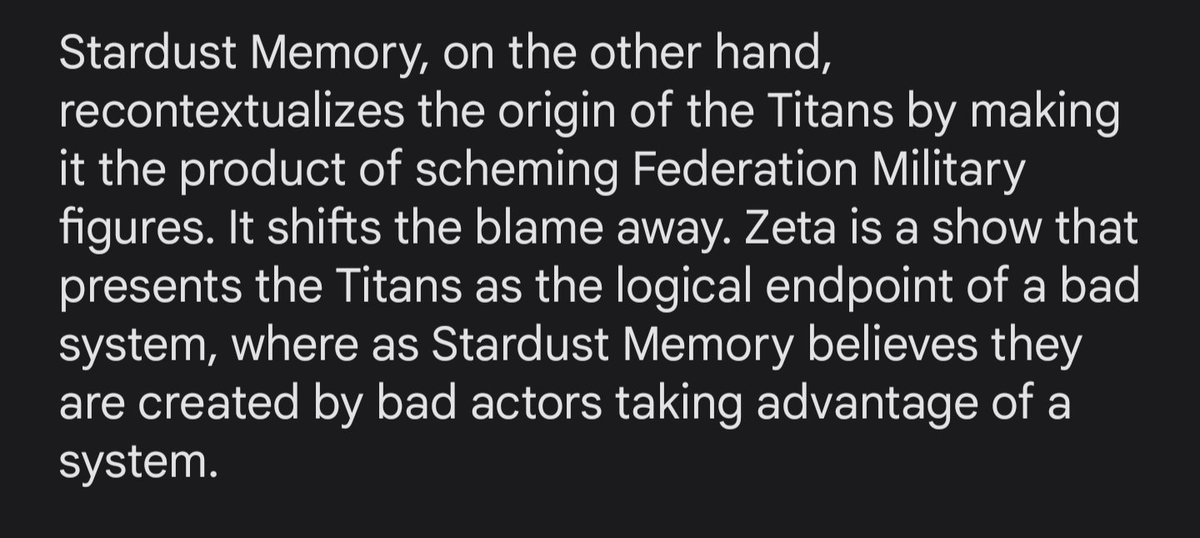So I guess Char& #39;s Counterattack discourse is happening again on Gundam Twitter. At the risk of ruining my Saturday night, I present to you
WHY SO MANY LEFTIST GUNDAM FANS FIND AXIS DROP WAY MORE MORAL THAN THE ALTERNATIVES: A THREAD
WHY SO MANY LEFTIST GUNDAM FANS FIND AXIS DROP WAY MORE MORAL THAN THE ALTERNATIVES: A THREAD
This is going to contain spoilers for like, all of Gundam btw. IDK what I& #39;m all going to end up covering in this so just assume if it& #39;s got Gundam in the name you might see a spoiler
So I want to start by saying that this and many other popular leftist Gundam readings you will see on Twitter are heavily informed by The Great Gundam Project, a podcast where two leftists watch through all of Gundam for the first time while providing deep reads of the material.
GGP is, in my mind, the single most important piece of Gundam criticism that we& #39;ve ever seen in the western internet fandom. I genuinely think their CCA ep is mandatory listening for all Gundam fans.
Conveniently, it& #39;s also one of their free episodes! https://www.youtube.com/watch?v=qF8OdRKKEK0&t=8s&ab_channel=AbnormalMapping">https://www.youtube.com/watch...
Conveniently, it& #39;s also one of their free episodes! https://www.youtube.com/watch?v=qF8OdRKKEK0&t=8s&ab_channel=AbnormalMapping">https://www.youtube.com/watch...
The rest of GGP is available for $1 on the Abnormal Mapping Patreon. You should really support them. Em, Jackson, and their guests all do phenomenal work and are never afraid to challenge mainstream reads of the western fandom (which are often flawed) https://www.abnormalmapping.com/ggp ">https://www.abnormalmapping.com/ggp"...
In particular I& #39;d like to highlight the last two seasons they just completed, After War and Turn A, which feature Austin Walker as a guest cohost and offers some of the best critical discussion I& #39;ve ever listened to.
They& #39;re currently on Seed. They go 2 episodes at a time.
They& #39;re currently on Seed. They go 2 episodes at a time.
Anyways, I also think it& #39;s worth noting that the opinions of those of us in the "pro axis drop for leftist reasons" camp are not a monolith. I& #39;ve seen plenty of disagreement regarding motivations and themes within this subsection of the community. There& #39;s tons open for discussion
With that said, there are probably people way better informed than I who could make this thread. All I can truly offer is my own personal reading of the material and where I& #39;m currently sitting with it. I& #39;m going to shoot my shot and hope I do the argument justice.
Something that must be highlighted when discussing the Gundam fandom& #39;s perception of Char& #39;s Counterattack as a film is that western fandom& #39;s first experience with CCA was in a very different context than it was originally intended. The impact of this cannot be understated.
As I& #39;m sure you know, Gundam Wing was the first Gundam story to truly make a splash in the west.
Wing was made at a time when Gundam& #39;s primary continuity, the Universal Century timeline, was growing larger and less accessible with each passing year. It was for a new generation.
Wing was made at a time when Gundam& #39;s primary continuity, the Universal Century timeline, was growing larger and less accessible with each passing year. It was for a new generation.
For better and for worse, Gundam Wing inherited many of the concepts, aesthetics and themes from its Universal Century predecessors. One of these was Zechs Merquise, a parallel to the Universal Century& #39;s Char Aznable.
Zechs& #39; character arc is an attempt to recapture the popularity of Char, resulting in an extremely condensed recreation of his character arc from the original Gundam series, Zeta Gundam and Char& #39;s Counterattack.
Naturally, condensing a narrative arc that was originally developed over the course of 93 episodes* and a movie into a 49 episode series that had a director change halfway through did not result in the most comprehensive or rich story.
*more like 140 tbh, ZZ is SUPER important to CCA even though many will tell you it& #39;s not because Amuro and Char are absent. I will elaborate later on in this thread.
In its final arc, Gundam Wing attempts to borrow much of the imagery and ideas from Char& #39;s Counterattack... but without having done the worldbuilding work necessary to establish why this conflict occurs or how it would resolve the problems built up to that point in the story.
In other words, aside from feeling like a forced attempt to recapture a popular part of the franchise& #39;s past, Zechs& #39; plan just reads as being *incredibly silly* within its own material.
This would have an effect on how many early fans would read Char& #39;s character in CCA.
This would have an effect on how many early fans would read Char& #39;s character in CCA.
Nevertheless, Gundam Wing was a true hit when it aired in English, and Toonami wanted more. They asked Sunrise to bring over the next AU Gundam series, After War Gundam X (fantastic show, btw).
However, to their surprise... Sunrise refused!
However, to their surprise... Sunrise refused!
If Wing could be successful in America, they thought, why don& #39;t we bring over the classic series? If they loved Wing, *surely* they& #39;ll adore the first one.
And so, the original 1979 series received an official English dub that began to air on TV in 2001.
Then 9/11 happened.
And so, the original 1979 series received an official English dub that began to air on TV in 2001.
Then 9/11 happened.
Kid& #39;s programming was hit by a wave. Shows depicting war were suddenly like venom. Gundam skipped its next episode. It aired one more time, then it was cut from the lineup. The finale got to air months later as part of a special programming block.
We received more Gundam around this time, often as part of the late-night runs that were geared towards an older demographic. But it& #39;s worth noting that what we got was *not* the sequel to Tomino& #39;s original series, Zeta Gundam, but post-CCA spin-offs made from other creators.
08th MS Team aired alongside the original series. War in the Pocket aired in November 2001. Stardust Memory aired in early 2002. These were often aired as part of late-night programming blocks made for an older audience.
While these OVAs have become ingrained in the modern perception of Gundam and are popularly celebrated as great contributions to the series, it is still worth acknowledging that Tomino had no involvement with them, and with different creators comes different takes on the world.
The example I find most egregious in this selection of OVAs is Stardust Memory.
In Zeta Gundam, Tomino depicts the Titans as a natural evolution of the Earth Federation as they were characterized in the original Gundam.
In Zeta Gundam, Tomino depicts the Titans as a natural evolution of the Earth Federation as they were characterized in the original Gundam.
For starters, the AEUG are nowhere to be found in CCA. They stopped the fascist threat they were formed to fight in Zeta, get used like lapdogs to fight the EF’s battles in ZZ, and then get folded back in as part of the system. Tragic.
This is the example that bothers me the most, but there is stuff all throughout 08th MS and 0083 (WitP is mostly fine) that does this - flattening a lot of the political commentary from Tomino& #39;s works. They sand out a lot of the nuance.
By this point, Gundam has captured the imagination of many blooming anime fans in the west. And it& #39;s so easy for fans to recommend these OVAs to newcomers looking to get into the Universal Century continuity. They look beautiful! They& #39;re short and digestible!
Sure, the original series is there, but despite being a beautiful show in its own right the late & #39;70s animation is a harder sell to the average viewer. And so, many Gundam fans fall in love with Universal Century not through the work of Tomino, but those who followed.
But that doesn’t mean the original series was ignored. In fact, it’s been beloved and held up as a classic within the fandom for as long as I can remember. But to this day, you will often see fans recommending the movie trilogy over the original series, and that factors in too.
Like the OVAs, it’s so easy to hand these to newcomers. They cover the major plot points in detail, the animation is prettier than ever, the new insert songs are profoundly moving – but many aspects of the original show and its worldbuilding had to be cut.
Many people shit on the episodic, one-off adventures featured in the original show, but they often neglect how much work these stories are doing to flesh out the world, its people and ideologies.
The episode “Time, Be Still” is not covered in the movie trilogy. It is not important to the larger journey of the White Base crew at all. But, it so wonderfully encapsulates MSG’s themes that I cannot imagine a comprehensive critical read of the series without touching on it.
Similarly, the movie completely glosses over episode 4, in which our heroes get *arrested* and hassled by the Earth Federation. Shout outs to the guy who POINTS A GUN AT A 4 YEAR OLD in particular.
Gundam spends plenty of time drawing a line between the White Base crew and the larger Earth Federation, as it does the Zabis and the Spacenoids who fight underneath them. I think it’s as early as ep. 2 Sayla makes a quip about the Federation elite and Bright gets irked.
A lot of this thematic material is (understandably) cut when the series had to go from a 43 episodes to three movies. But this is why you’ll find many leftist fans recommending the TV series over the movies – a lot of us view this material as crucial.
This is still a thread about Char’s Counterattack, I promise. I know this is a lot, but let’s recap. I need you to trust me that this is all important.
So let’s recap:
We have a popular show that ends with a poor imitation of CCA’s plot,
popular OVAs that aren’t necessarily as interested in the same political exploration as Tomino’s work,
and the one work of Tomino’s we do have is often recommended in a condensed form
We have a popular show that ends with a poor imitation of CCA’s plot,
popular OVAs that aren’t necessarily as interested in the same political exploration as Tomino’s work,
and the one work of Tomino’s we do have is often recommended in a condensed form
At this point, early Gundam fandom is not primed to view CCA and have the same experience with it that Japanese fans were able to in its publication order. This isn’t their fault – this is a product of Gundam being brought over in a way that valued marketability over storytelling
Unfortunately, CCA would be released and sold as the “conclusion” to the original Mobile Suit Gundam series in English. This is a profoundly terrible way to experience this movie.
Because in actuality, Gundam was followed up by two sequel shows, Zeta Gundam and ZZ Gundam.
Zeta wouldn’t be released in English until after CCA, and ZZ wouldn’t get officially released for a LONG time.
Zeta wouldn’t be released in English until after CCA, and ZZ wouldn’t get officially released for a LONG time.
Both of these shows flesh out the setting of Mobile Suit Gundam significantly, and are far more politically involved than the original (not to say the original wasn’t – let’s just say the RX-78-2 is red/white/blue for a reason!)
Zeta is a popular show and I don’t feel like it needs much discussion here. We get told more explicitly the wealthy got to remain on Earth and the poor were forced to migrate into space, the EF’s rampant destruction of the environment, etc.
Now, there are *many* people in the fandom that will tell you ZZ doesn’t affect CCA at all, because they do not include the characters of Amuro or Char. I am here to tell you that those people are wrong.
In fact, I’d argue ZZ builds upon Zeta in ways that are just as important as the ways Zeta built upon the original series.
*So much* of this show is about seeing the setting from different perspectives.
*So much* of this show is about seeing the setting from different perspectives.
And that includes our protagonist, Judau! Unlike our prior protagonists, who lived comfortably and had parental ties to the Earth Federation government, Judau and his friends are scavengers in a run-down colony, directly suffering from the Federation’s apathy.
The second half of the series in particular (which many people unfortunately do not make it to, because the first half is very comedic and alienates many viewers) deals with the neglected populations on Earth, including an African Independence movement.
It’s worth noting that in these episodes, the Blue Team chooses to ally itself with Neo-Zeon, not the AEUG, to achieve their goals. They find more sympathy in the spacenoid struggle against the Earth Federation.
ZZ is very happy to show how much the Earth elite sucks, in fact. Now that the Titans are gone, they’re more than happy to sit back and profit off the war. They’ll even give in to Haman’s demands if they can benefit.
ZZ ends with the Earth Federation fucking over the AEUG in a massive way, and Judau having to wrestle with the fact he alone cannot change things. He and Roux leave the Earth Sphere to find happiness elsewhere, but also abandon the possibility of bringing change themselves.
This is such an important ending to me, because it rounds out well with Amuro and Kamille.
We see how taking on the role of a Gundam Boy goes: Kamille is horribly wounded in battle, Judau is forced to live with the fact nothing he fought for will result in permanent change.
We see how taking on the role of a Gundam Boy goes: Kamille is horribly wounded in battle, Judau is forced to live with the fact nothing he fought for will result in permanent change.
It took me so long to get here, and I’m sorry. But I cannot talk about CCA without also noting how it was set up to be read poorly by its initial western audience. And the common fan reads and talking points established back then have stuck with this film since.
This movie is seen as the one where “Char goes crazy” or “the writers ruin Char’s character to have a final battle.” All of that is nonsense.
Everything you need to know to understand Char’s viewpoint was in previous entries. Including ZZ.
Everything you need to know to understand Char’s viewpoint was in previous entries. Including ZZ.
“Ah, you mean how Char decided humanity was bad after he saw what happened to Kamille?”
No. I don’t care about the ending to that PS1 game everyone holds up like a Rosetta Stone. It’s not important, it was never necessary for a clear read on CCA Char.
No. I don’t care about the ending to that PS1 game everyone holds up like a Rosetta Stone. It’s not important, it was never necessary for a clear read on CCA Char.
In the final episode of Zeta Gundam, Kamille laments that it would probably take something extreme to free the Earth Sphere from its current status quo. At the end of ZZ, our heroes are left incapable of bringing any change from within. The writers have been seeding this.
The logical endpoint to this storyline is a conflict of Revolution vs Reform. How many lives must suffer due to state violence before a violent uprising becomes the moral path forward? This is the question that is key to Char’s Counterattack.
For starters, the AEUG are nowhere to be found in CCA. They stopped the fascist threat they were formed to fight in Zeta, get used like lapdogs to fight the EF’s battles in ZZ, and then get folded back in as part of the system. Tragic.
What we have instead is the Londo Bell Task Force, a group formed to investigate and eliminate anti-Earth Federation resistance movements.
You may remember watching a show called Mobile Suit Zeta Gundam, where the antagonists were the Titans, a group formed to investigate and eliminate anti-Earth Federation resistance movements.
Wait a minute. Uh oh. Hmmmm...
That’s right, baby. Amuro and Bright are back in the Federation and they signed up with Oppressive State Police Force 2: Electric Boogaloo.
Many Gundam fans will tell you that Londo Bell is okay as an institution because “Amuro and Bright are there to keep things in check.”
I encourage those fans to think about what Gundam has previously shown us regarding individuals’ ability to prevent imperialism.
I encourage those fans to think about what Gundam has previously shown us regarding individuals’ ability to prevent imperialism.
The people of space fucking hate Londo Bell.
One of my favorite scenes is the one where Amuro and Bright whine because the Space Poors keep helping out Char instead of them.
One of my favorite scenes is the one where Amuro and Bright whine because the Space Poors keep helping out Char instead of them.
The status quo that Amuro fights so desperately to defend is portrayed through landscapes of ruination and decay. The government he fights for utilizes a military police force that deports illegal Earth residents back out to space.
A diegetic version of the movie’s main theme plays as Char boards public transit and is cheered on by the people around him. “Char is fighting for our prayers,” they sing. The movie is very clear whose side the people of space are on.
And an important note that we cannot ignore – The population of the Earth Sphere is about 2 bil. on Earth, 9 bil. in Space in OYW times. And more active programs to deport people into space have been in effect since.
These are the masses Char fights for, the downtrodden people who feel they& #39;ve been abandoned and left to rot in space while others profit off their hardships.
Lalah’s spirit herself rejects the notion that what Char is fighting for is inherently monstrous, as so many in the western fandom love to claim. She refutes Amuro and tells him that Char is pure of heart.
Now, it& #39;s only fair to note the movie does spend some time interrogating and questioning Char’s ideals. He acknowledges what he’s doing will be the most destructive act of violence ever committed.
The scene where Rezin fights with Quess and Gyunei, in my mind, has always been meant to sow doubt regarding the idea of a spacenoid/Newtype future being a completely peaceful one.
But no revolution has ever been fought for the promise of a clear-cut utopia. The people of space deserve a better future than the imperial hegemony of the Federation.
Char’s plan will end countless lives.
But how many lives, both in the present and well into the future – will suffer because of the Earth Federation’s continuation?
But how many lives, both in the present and well into the future – will suffer because of the Earth Federation’s continuation?
This is history. This is capitalism. The violence that is carried out in service to the status quo is obscured, the violence intended to disrupt or resist it is accentuated and endlessly scrutinized.
This is the heart of the conflict between Amuro, who naively believes the system will work itself out, and Char, who has seen the system cannot be budged and must be dismantled through extreme action.
“But if he wants to destroy the Earth Federation elite, can’t he just target them instead of causing such widespread damage?”
Well, young Hathaways in the audience, Tomino wrote a story about that. I’ll let you see yourself how that ends up working out.
Well, young Hathaways in the audience, Tomino wrote a story about that. I’ll let you see yourself how that ends up working out.
Char’s argument for the axis drop isn’t just about freeing the people of space from the Federation’s oppression, however. It’s also an environmental one. This has resulted in many accusations of eco-fascism, eco-terrorism, etc.
People *love* to go on about Char being a hypocrite about this, as the axis drop would result in nuclear winter, which seems to run counter to all his critiques of the Federation’s exploitation of the land.
But Char’s views are pretty consistent about this. To say that Earth’s entire ecosphere would come to an end simply because the planet is no longer habitable to humans is the height of hubris.
This is why Char (and later, Mafty) frame the forced evacuation of Earth as giving the planet a long rest. The planet can heal and move on. It’ll be fine.
Especially in a setting where humanity has grown beyond the need to take from the Earth to live, exploiting the land’s resources to uphold a violent state is a special type of evil.
“But Char clearly was just suicidal, he set himself up to fail. He just wanted one final battle with Amuro.”
You see this read a lot too. I don’t understand why it’s so hard to consider he both wanted the axis drop to succeed and defeat his rival in a way he found satisfying.
You see this read a lot too. I don’t understand why it’s so hard to consider he both wanted the axis drop to succeed and defeat his rival in a way he found satisfying.
In fact, this is important to my personal read of the movie, though I’m sure there’s plenty pro-axis drop Gundam fans who read things differently than I do:
Char’s revolution fails in part because his positioning as a savior means his personal weaknesses are bound to become weaknesses of the entire movement as well. It is a reminder no one soul can truly move the world in this way, mass action is critical.
But what of the axis shock, the light of the human heart, and the Geara Dogas themselves moving into position to assist the Jegans in pushing back axis? The people on Earth starting at the green aurora?
It is easy to point to the ending as a feel-good victory. The Earth is spared by a miracle of collective human will – I viewed it as such for the longest time myself.
But, nowadays. I don’t think the ending of CCA is a statement as much as it is an observation, or a lingering question.
After all – Once again, none of the setting& #39;s actual problems have been resolved. Amuro and Char are dead. Earthnoids and Spacenoids will continue to fight.
After all – Once again, none of the setting& #39;s actual problems have been resolved. Amuro and Char are dead. Earthnoids and Spacenoids will continue to fight.
Tomino is someone who lived through the rise and decline of various leftist youth movements in Japan, which many of his contemporaries and collaborators were involved with.
And so, when the time comes to wrap up CCA, Tomino draws from what he’s seen from the world itself: Time and time again, the human heart chooses the path of reform over the path of revolution. And we are left to wonder where that path will takes us.
The ending track, Aurora, is not a triumphant affirmation of victory. It leaves us with a feeling of melancholy and unease, as humanity is forced to stare into the depths of its own heart and ponder what the future holds. https://www.youtube.com/watch?v=d0het6I7S8s&ab_channel=cappuccino">https://www.youtube.com/watch...
Much of this reading is informed by Tomino’s other work, both what came before as well as after.
Space Runaway Ideon: Be Invoked isn’t Gundam, but it sure is a Tomino work in style, tone and theme. Truly one of the most beautiful endings I’ve ever seen to a story, it greatly informs Tomino’s views on humanity, apocalyptic events and cycles.
Tomino’s later contributions to Gundam make it pretty clear the future that Amuro fought so hard for is a fucking nightmare. F91 depicts the Earth Federation as a failing, inept state. Victory’s opening narration hammers home humanity learned nothing.
And that’s just the opening. The Earth is more devastated and polluted than ever. The “Char Clone” wears a mask not to hide his identity but because the Earth’s air is so contaminated it bothers his lungs.
And that’s just the Tomino anime stuff. If we’re getting into the recently adapted Hathaway’s Flash and Gaia Gear, Tomino’s stance on the EF should be pretty clear. GG outright links Federation policies to white supremacy.
Even going into Turn A Gundam, I think it’s worth noting the Gundam is not referred to as the “savior of Earth.” It is explicitly remembered as “that thing that terrorized space immigrants.”
Kinda hard to read that any other way.
Kinda hard to read that any other way.
CCA is a flawed movie in my opinion, but it’s also one that is subject to egregiously uncharitable and shallow reads that rob it of any real depth. For me, this is a movie I feel like I constantly gain more from every time I rewatch it.
I think it’s pretty apparent to anyone who even has a general understanding of leftist movements why Char’s plan would be appealing to a leftist, or at the very least why many of us believe the faction who can& #39;t stop making different types of military police NEEDS to be wiped out
But hey, if there’s anything we’re used to, it’s getting yelled at for demanding radical action against empires while state violence goes unaddressed.
Anyways, that’s the thread I spent way too much of my weekend writing out. I justified writing this out by telling myself I’m going to do long-form video analysis of Gundam some day and this will be a nice rough draft when doing the CCA part.
Also, go read Marx, it’s a good time!
Ah goddammit.
Folks I fucked up copy and pasting my write-up lol.
After the Jerid gif tweet was supposed to be something like this, I& #39;ll just rewrite it in my notes app:
Folks I fucked up copy and pasting my write-up lol.
After the Jerid gif tweet was supposed to be something like this, I& #39;ll just rewrite it in my notes app:

 Read on Twitter
Read on Twitter